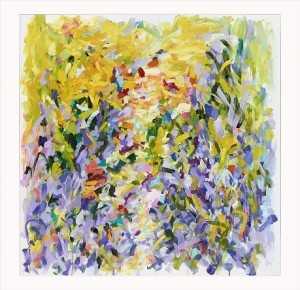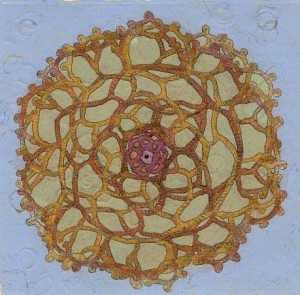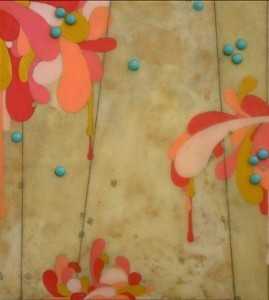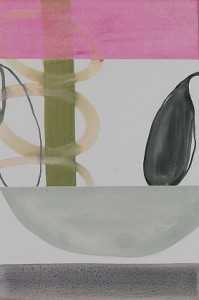Want to start collecting fine art but don't know where to begin? Know the Masters, but from there it's all Greek? Think you're going to make a fortune "investing" in art in the right market? Kathryn Markel of Kathryn Markel Fine Arts (one of our go-to's) shares some important tips for buying art.

Rule #1- Never Buy only for the sake of making an Investment.
You must love your art and allow it to give you pleasure every day. If dollar signs are all you think about when you look at it, it's not good for your soul or for the art. In the very unlikely case your art happens in increase in value, consider yourself lucky that you did not have to pay more for the same pleasure.
- 99% of all artwork never goes up in value: Most pictures decline 50% in value the minute you walk out of the gallery. Dealers typically take 40-50%.
- The art market fluctuates the same as every other market: For example, big collectors who paid top dollar for art in the late 80's were left with unwanted inventory in the early 90's when the Japanese stopped buying art and Wall Street tanked.
- Art is not liquid. Typically, a dealer who sold you something, will not not take it back five years later. She has new work to sell by the artist, and does not want to deal with older works. Unless, the artist has substantially appreciated in value.

Learning about art takes time and effort just like learning about anything else.
- Look
at art constantly and develop your eye, so that you learn what you like and why. The more you look, the more you'll come to understand the difference between what is good and what is not. This might not change the kind of art you like, but will help you distinguish between the good (of what you like) from the bad.
. - Note the "Isn't it amazing" picture and how many there are....
For the uninitiated, a realistic oil that looks like a photo can be an amazing - How did the artist do that? Well, it's actually quite simple. Anyone can learn if they have time and patience. - Note cliches.
The more you look, the more you see that there are thousands of artists working in an "isn't it amazing?" style. The more you look the more you become aware of the cliche of using thrilling technique as the basis for artistic merit. An image must resonate beyond technique. There are also hundreds of competent artists who are good illustrators. The work is fine, butyou cannot tell one from another and there is no true originality or unique way of viewing the world. Furthermore, this competent illustrative art becomes more obvious as a cliche the more you see it.

Rule #3 - Trust Your Own Taste
At the end of the day, after looking and looking, you must trust your own taste. Good art comes with many different syles and subjects. The style and subject matter that really speak to you depends on how well your personality converges with that of the artist. You might have an eclectic sensibility and appreciate many kinds of good art, you might like the romantic landscape, colorful expressionistic painting, or Zen-like minimalism. No matter what kind of art really grabs you, do not be afraid to mix different things in one space. In the end your general taste will connect them all.

Although you are NOT thinking "investment potential" (you're not, are you?), you should be thinking VALUE.
You do not want to be ripped off, and in the art world, it's easy to spend lots of money on junk. Again, you must go through the learning process. If you're spending under $700 for an original work on paper or under $2000 for a good - sized painting, don't worry. Use these numbers as general guidelines for buying artwork, and remember buy anything that pleases you and is cheap. Remember, artists have to make money too. A typical artist who makes one watercolor a week and sells it directly for $500 each, makes $24,000 a year. Furthermore, she probably has an expensive Masters of Fine Arts degree, plus the costs of postcards, supplies, paper, rent, and framing. Most likely, she has a day job and is caught in the classic artist-bind: the artist has to make enough to live, and at the same time, find time to paint. It's a hard life, so give her a break and don't complain about her trying to sell an original work of art for more than $300. Pay her gladly.

Rule #5 - Buy from reputable dealers - But how can you tell?
When you are purchasing art, for more than $700 for an original work on paper or $2000 for a painting, it is a good idea to work with a reputable dealer. That's easy to say, but how can you - the uninitiated - tell a reputable dealer from a sleaze?
- Avoid any dealer with who sells Salvador Dali, or Norman Rockwell. Other artists to avoid are Tarkay, Erte, Earle, Jiang, Chagall (late), Max, Neiman, and Agam. They are all overpriced.
- Avoid - like the plague - the "Limited Edition Print" and any dealer who sells them. They are nothing but overpriced, signed posters.
- Avoid the dealer who talks investment and offers a "Certificate of Authenticity". Certificates of authenticity are usually phony. They lead you to believe that you have an original piece of work when in reality you may not.
- Avoid galleries located in shopping malls, tourist areas, and airports. For some reason, which I have yet to figure out, the average person only thinks about buying art on vacation. Although I'm sure there are exceptions, many galleries take advantage of that.
- Avoid buying art from the framer in your local shopping mall. Again, I'm sure there are exceptions, but she's probably not the best person with whom you should spend any serious amount of money. Typically, she knows little about the realities of the broader art market.